Abstract
The N-chloramine compound 3-chloro-4,4-dimethyl-2-oxazolidinone (agent I) has been compared with calcium hypochlorite as to its efficacy as a bactericide for the treatment of water. The study included concentration, contact time, pH, temperature, and water quality as controlled variables. The species of bacteria tested were Staphylococcus aureus, Pseudomonas aeruginosa, and Shigella boydii. In general, for highly pure, demand-free water, calcium hypochlorite was the more rapid disinfectant at a given total chlorine concentration, although for water containing a controlled amount of organic load, agent I was the better disinfectant. The differences in efficacy of each of the two disinfectants can be attributed primarily to their different stabilities in water at various controlled conditions.
Full text
PDF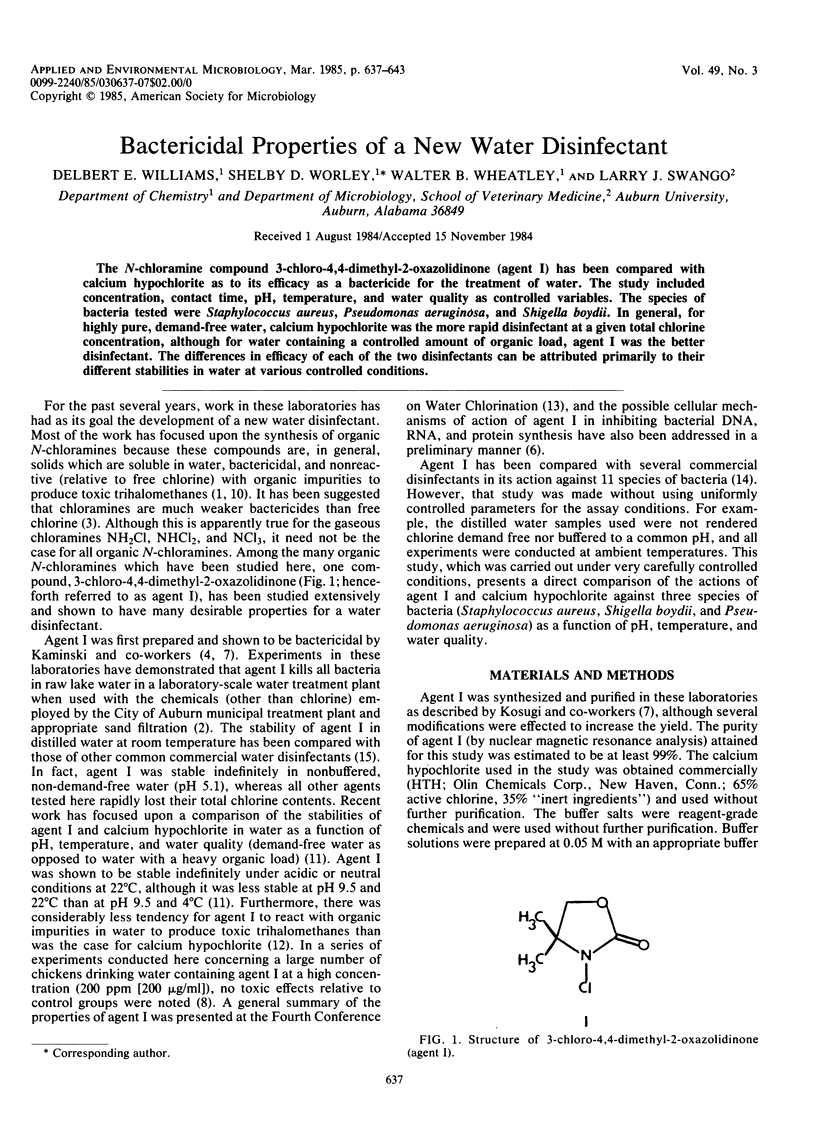
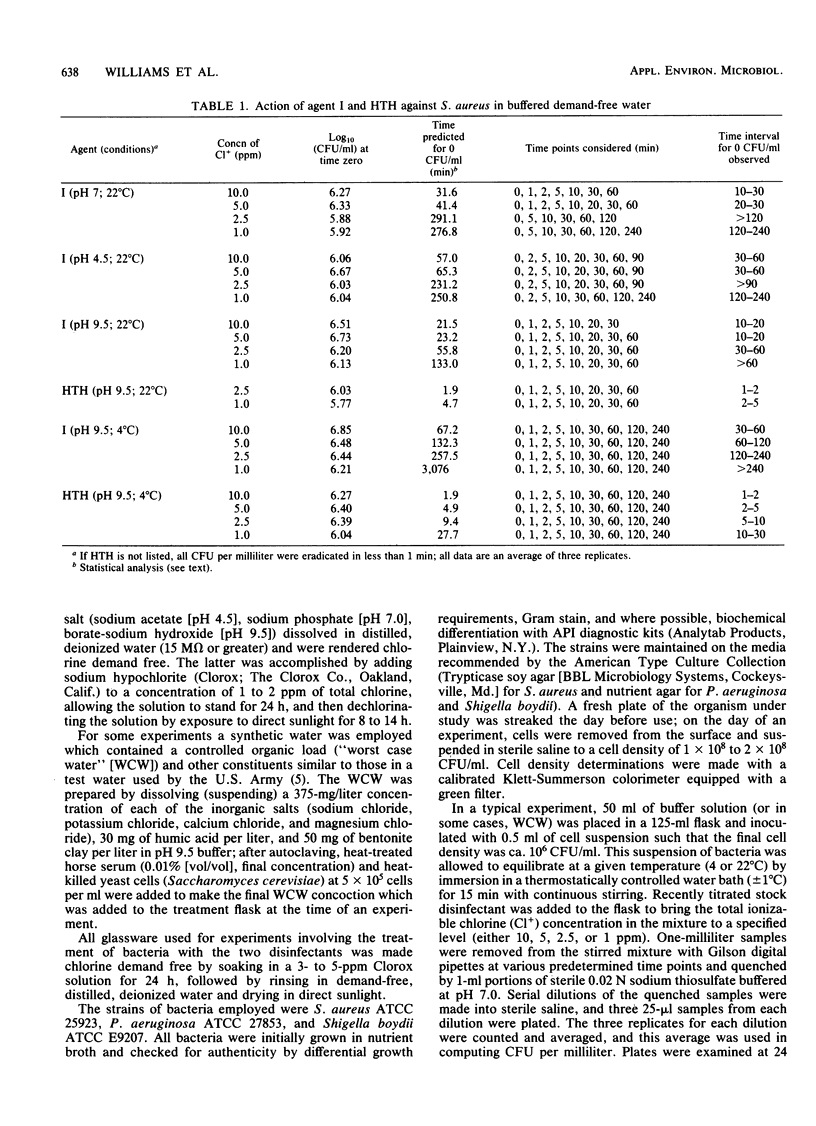
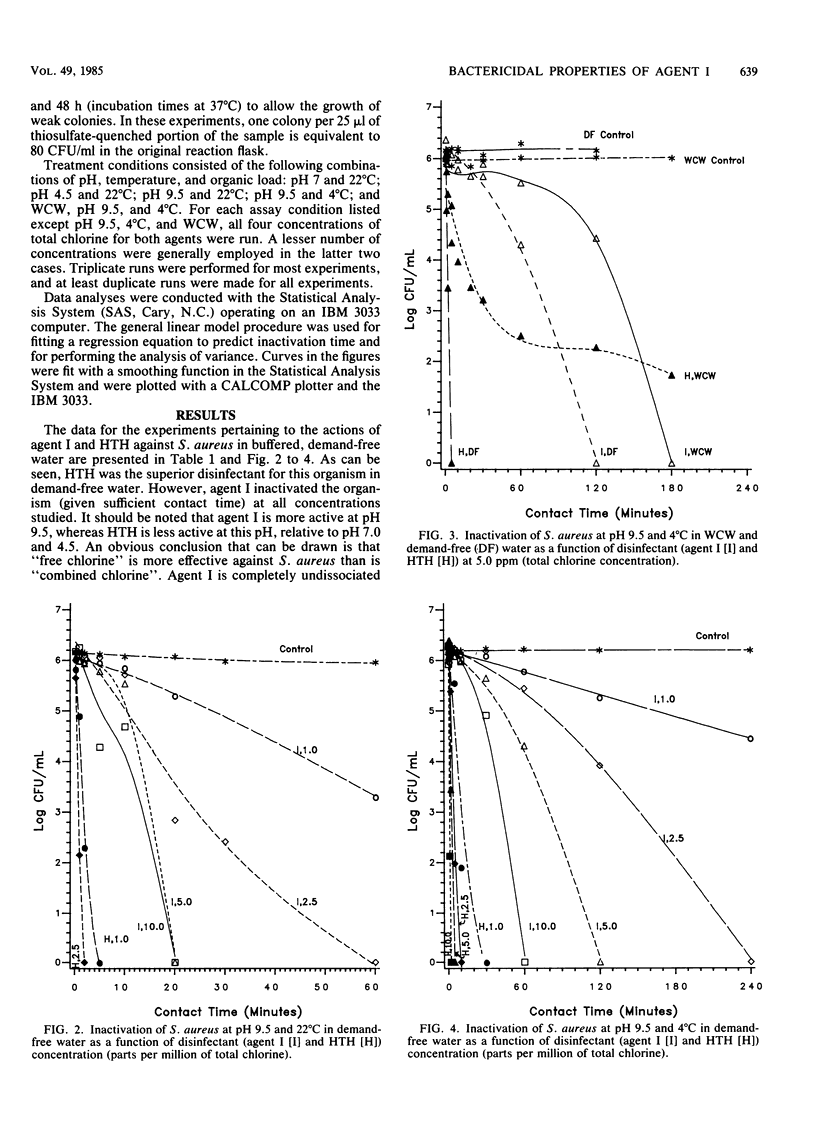
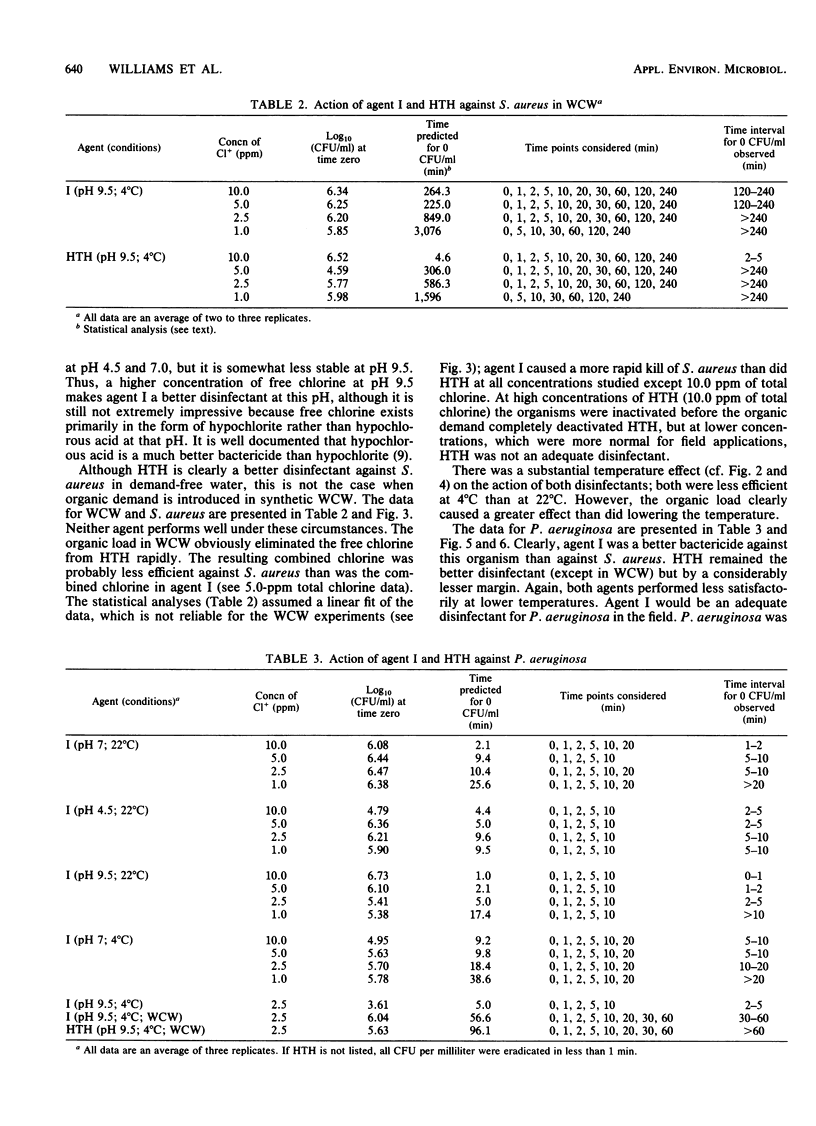
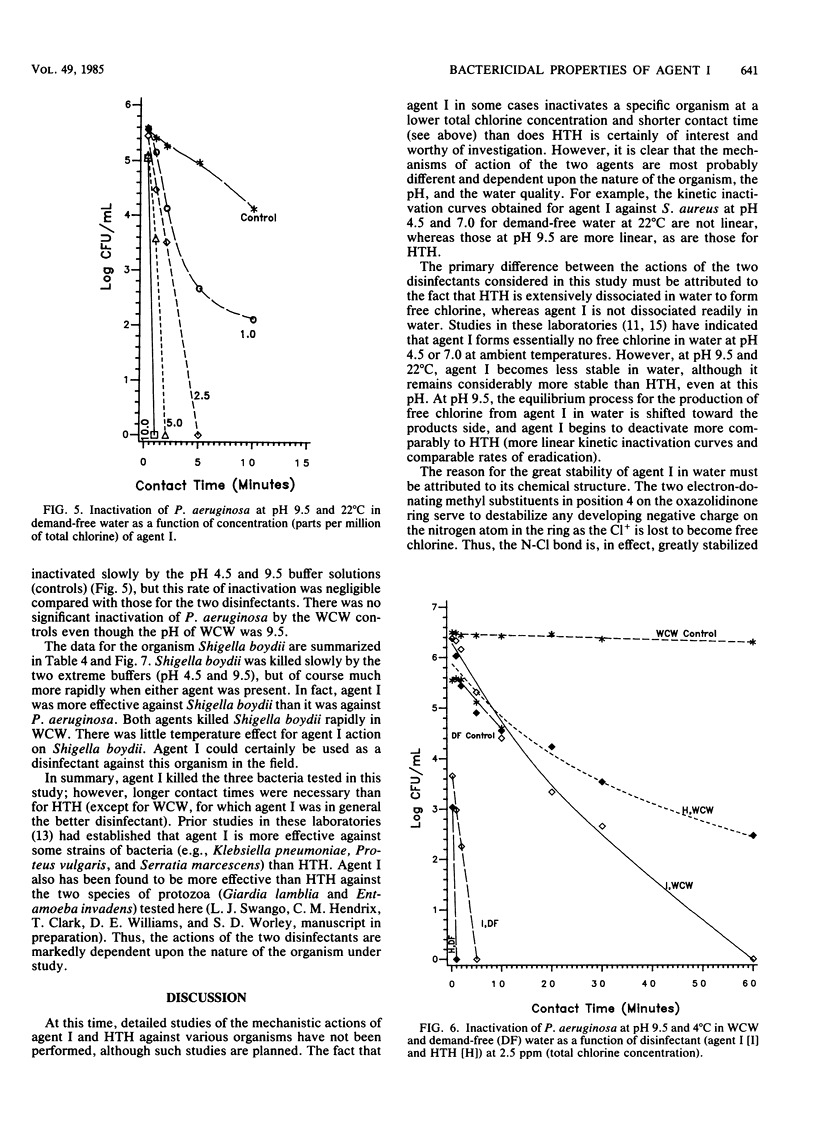
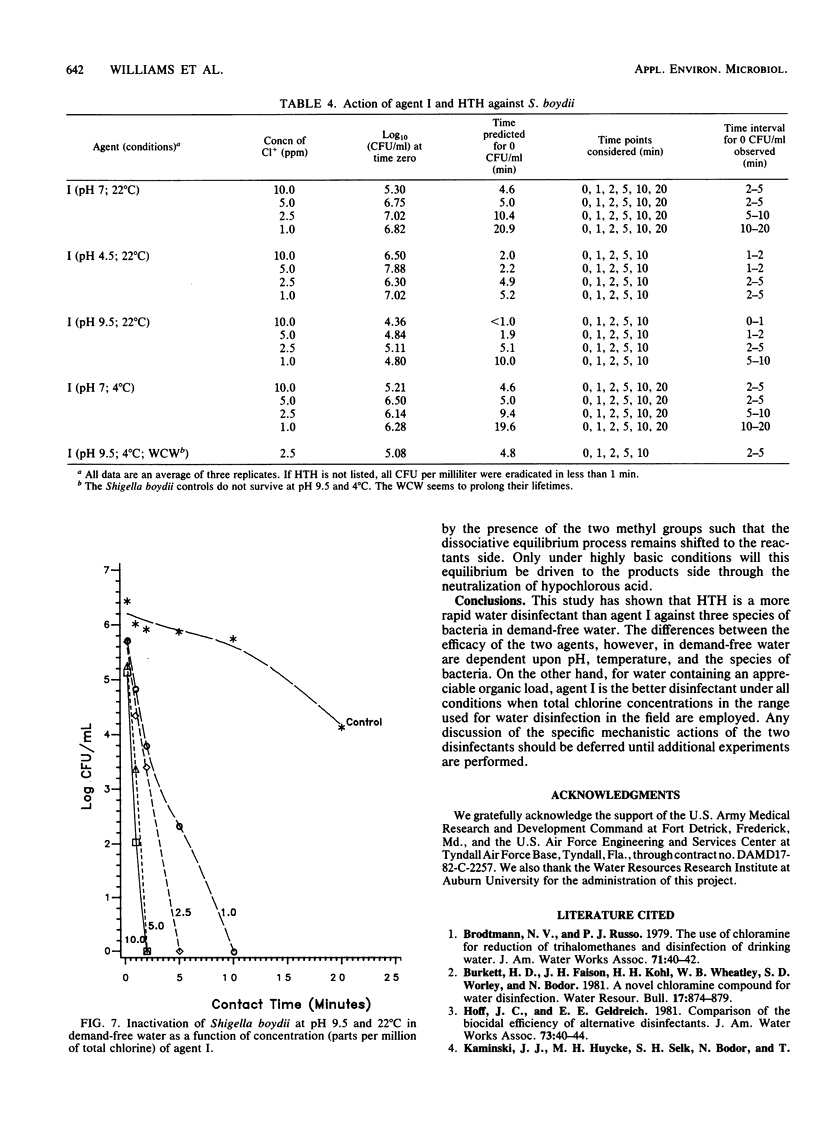
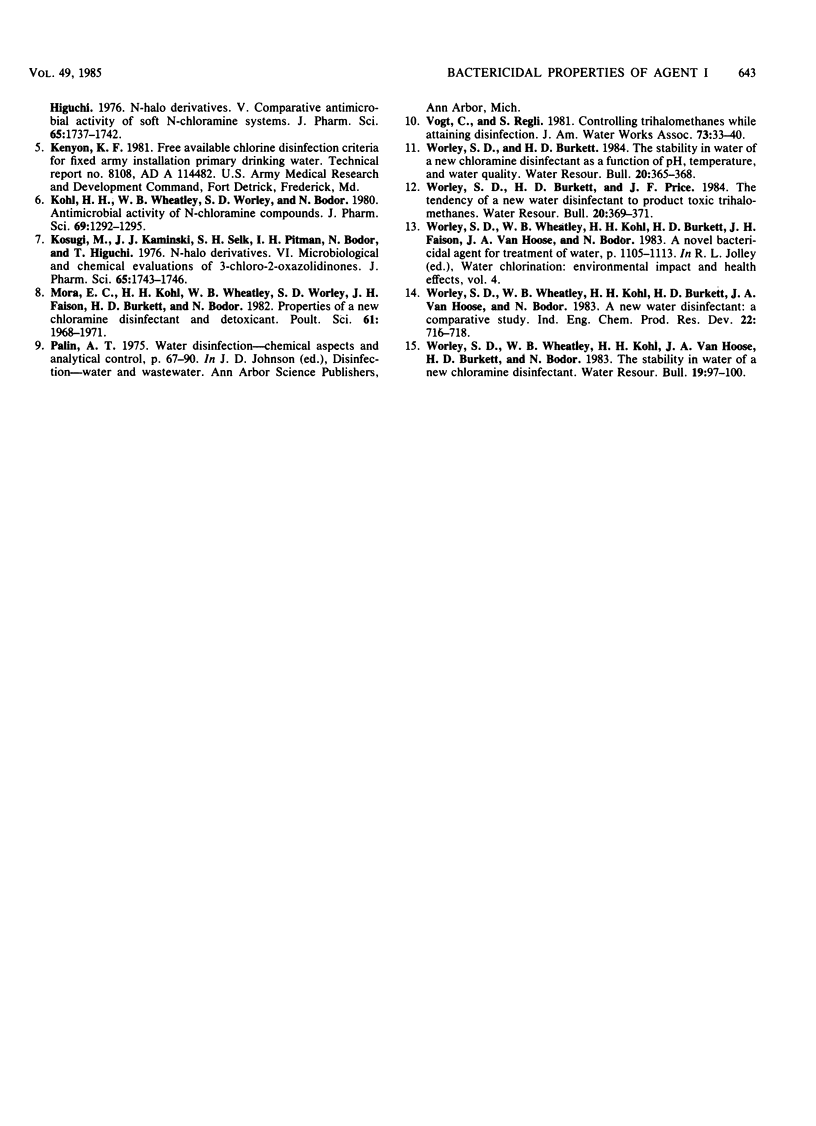
Selected References
These references are in PubMed. This may not be the complete list of references from this article.
- Kohl H. H., Wheatley W. B., Worley S. D., Bodor N. Antimicrobial activity of N-chloramine compounds. J Pharm Sci. 1980 Nov;69(11):1292–1295. doi: 10.1002/jps.2600691116. [DOI] [PubMed] [Google Scholar]
- Kosugi M., Kaminski J. J., Selk S. H., Pitman I. H., Bodor N., Higuchi T. N-Halo derivatives VI: Microbiological and chemical evaluations of 3-chloro-2-oxazolidinones. J Pharm Sci. 1976 Dec;65(12):1743–1746. doi: 10.1002/jps.2600651212. [DOI] [PubMed] [Google Scholar]
- Mora E. C., Kohl H. H., Wheatley W. B., Worley S. D., Faison J. H., Burkett H. D., Bodor N. Properties of a new chloramine disinfectant and detoxicant. Poult Sci. 1982 Oct;61(10):1968–1971. doi: 10.3382/ps.0611968. [DOI] [PubMed] [Google Scholar]


